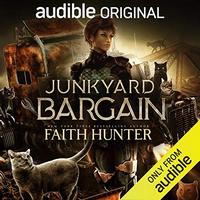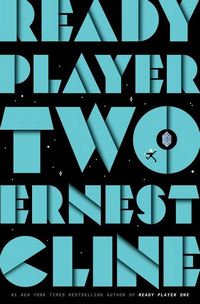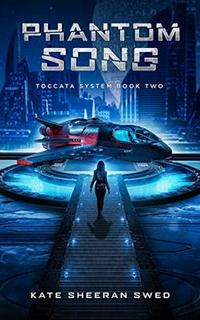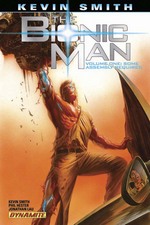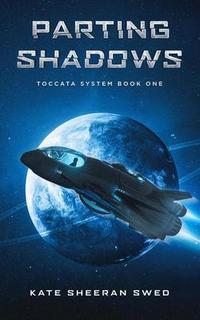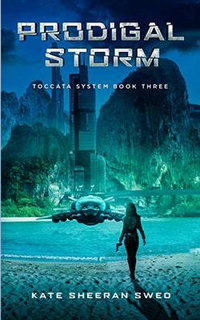 |
Prodigal Stormby Kate Sheeran Swed Paperback, 179 pg. Read: April 5, 2021 |

If you’ve read what I had to say about the first two books in this trilogy and have yet to make up your mind about starting them, skip down to the “What did I think” heading, because there’s just no way to explain the setup to this without ruining the first book for you (and possibly the second).
What’s Prodigal Storm About?
A little over two weeks ago, Astra, the assassin raised by the revenge-driven AI, SATIS, had failed to carry out her mission to kill Conor. Conor is the child of the man who broke SATIS’s heart (after giving her the ability to have a broken heart). But because SATIS was careful, she had a large number of assassins as backups—including the woman acting as Conor’s bodyguard.
LJ (known to Astra and Conor as Laura), had carried out the mission, even though she loved Conor. She’s now holed up in a bar, trying to move on with her life. Her closest friend is Viv, SATIS’s liaison to humanity, who’d been a person of contact for nearly all the assassins. Now, Viv is trying to bring them to the bar she manages so they can get help in getting over SATIS’s death and hopefully find a way to live normal lives from here on out.*
* I got a real Orphan Black-sestra vibe from this gathering.
Little did any of them know that Conor had been saved by SATIS before she “died.” Now he’s on their planet, on a mission to take down his father’s AIs before they take over the Toccata system. The “sisters” band together to help him with this—even if several of them remember all too well that they’d been raised to kill him, and now they’re working with him. It’s not an easy transition.
I hope that made sense, it’s hard to summarize in a few paragraphs—I assure you, it makes a lot of sense when Swed spends several pages describing it.
A Broken Trend
Parting Shadows was inspired by Miss Havisham, Phantom Song was influenced by The Phantom of the Opera, but if Prodigal Storm is based on a classic work of literature, I didn’t recognize it (so I’m really hoping it wasn’t, I don’t want to be announcing my ignorance like this). I get that the needs of the story matter more than keeping up the literary allusions, but I missed that.
So, what did I think about Prodigal Storm?
I’ve had a really difficult time deciding what to say here, because it feels like I’m giving too much away about any/all of the books in the series—particularly this one.
The ending to the AI storyline was good—there were some good battle scenes, some interesting character development, and some fun new characters. I’ve got no complaints there. But what’s even better is seeing the “sisters” come together, building on the damaged (at best) childhoods that almost all of them had, thanks to SATIS), and turning it into something positive.
That’s not an easy road to travel by any means, and there are more than a couple of setbacks in these pages But there’s reason to hope throughout, too. This is a book about healing—even when it’s hard. It’s a story about forgiveness (and seeking it). It’s about the power of family (natural or adoptive*). And it’s about cleaning up the messes our parents have created.
* Again, see Orphan Black.
All in all, a solid conclusion to this series and reason enough to keep an eye out for new works by Swed. You should give the series a try.

This post contains an affiliate link. If you purchase from it, I will get a small commission at no additional cost to you. As always, opinions are my own.
![]()



 Grab a book, any book.
Grab a book, any book.

